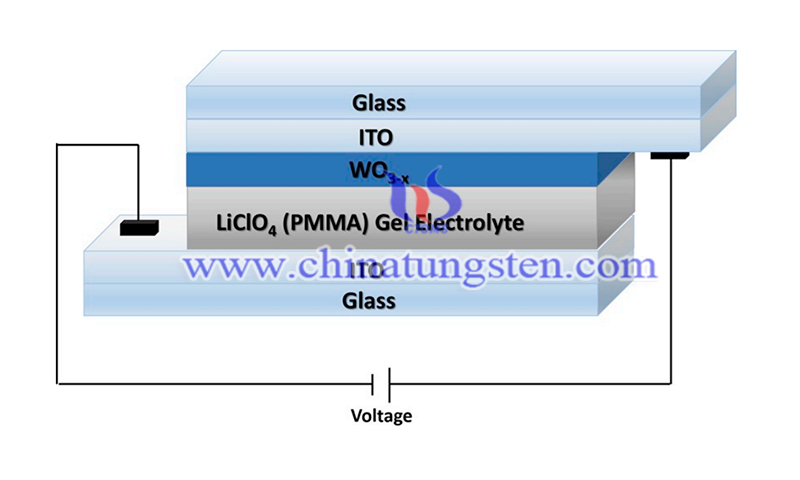Comparison of Electrochromic Properties of Tungsten Oxide Films
- Details
- Category: Tungsten's News
- Published on Friday, 16 December 2022 19:43
Tungsten oxide films are able to switch rapidly between transparent and blue states. These are the counteractions of the mesoporous structure and the interconnected nanocrystalline phases. Deepa et al. compared the electrochromic properties of sol-gel-derived amorphous and nanocrystalline tungsten oxide films. The pristine acetylated tungsten peroxide sol with and without the addition of 4 wt% oxalic acid dehydrating agent (OAD) produced nanocrystalline and amorphous tungsten oxide (WO3) films, respectively, by the impregnation technique.
Band gap widening upon lithium insertion was observed for both films as a repercussion of the Burstein-Moss effect, and structural changes occurring upon coloration were also reported. Srivastava et al. synthesized sol-gel derived tungsten oxide films with pseudocubic trigonal nanorods and nanoparticles using acetylated peroxotungstate as a precursor material in a sol-gel impregnation route followed by heat treatment. The kinetic mechanism responsible for the formation of nanorods has also been elucidated.

(Credit: Dilek Evecan and Esra Zayim/Current Applied Physics)
Both nanorods and particles are reported to exhibit a pseudocubic crystal structure. Jiun-ChanYang et al. used a solution-based approach to synthesize efficient WO3 sensing electrodes for high-temperature potentiometric NOx sensors. The electrode nanostructure and the species at the electrode-electrolyte interface have a significant impact on the sensitivity, response and recovery time of electrochemical sensors.
The YSZ-based NOx potential sensors with WO3 sensing electrodes have been reported to show considerable promise in improving sensitivity.
Nanostructured tungsten oxide films are electrochemical films resulting from the self-assembly of sodium dodecyl sulfate-tungsten oxide aggregates at the electrode-electrolyte interface. Poor color bleaching rates were observed for films annealed at 250 and 500 degrees C, which were attributed to pore shrinkage, high density, and crystallinity.
Deepa et al. compared rotational and dip-coated electrochromic tungsten oxide films and investigated the structural, morphological, optical and electrochromic properties. They found that the cyclic impregnated films have higher transmission modulation and coloration efficiency, faster switching speed, higher electrochemical activity, and higher performance in terms of charge storage capacity in the solar and optical regions.

(Credit: Dilek Evecan and Esra Zayim/Current Applied Physics)
The impregnated film can withstand 2500 color bleaching cycles, while the spin-coated film can only withstand 1000 cycles. The better cycling stability of the impregnated film is the result of a balance between optimal water content, porosity and grain size, which hints at its potential application in electrochromic windows. Deepa et al. investigated the effect of oxalic acid dehydration on the optical and electrochemical properties of sol-gel derived amorphous electrochromic WO3 films.
Reference: V Hariharan, B Gnanavel, R Sathiyapriya, V Aroulmoji. A Review on Tungsten Oxide (WO3) and their Derivatives for Sensor Applications. International journal of advanced Science and Engineering, Mahendra Publications, 2019, 5, pp.1163 - 1168. ff10.29294/ijase.5.4.2019.1163-1168ff. ffhal-03093589
- Tungsten Manufacturer & Supplier, Chinatungsten Online: www.chinatungsten.com
- Tungsten News & Prices of China Tungsten Industry Association: www.ctia.com.cn
- Molybdenum News & Price: news.molybdenum.com.cn
- Tel.: 86 592 5129696; Fax: 86 592 5129797; Email: sales@chinatungsten.com



 sales@chinatungsten.com
sales@chinatungsten.com